It’s the question that most sleepers ask themselves when buying a new mattress. And the answer isn’t always black and white.
The short answer is MAYBE.
You need a box spring when…
- The manufacturer requires it.
- You want a taller mattress profile.
- The bed frame does not provide adequate support.
In this guide
Why do you need a box spring | When you need a box spring | Bed Frame Types | Can you put a mattress on the floor | Box spring alternatives | Summary
Why do you need a box spring?
Originally, box springs were an essential part of a bed. Every bedroom typically had three parts (from bottom to top):
- Bed Frame
- Box spring
- Mattress
The box spring provides support to the mattress above and evenly distributes the weight of the mattress onto the bed frame. Even weight distribution helps to ensure that the mattress and all materials will last as long as possible.
What about mattresses today?
As technologies developed and mattress companies began to think about mattresses differently, this classic way of thinking began to be questioned.
Do you really need a box spring?
Oftentimes, the answer is no. As long as the mattress is getting sufficient support from either the bed frame or another foundation under the mattress, you don’t need a box spring (unless the manufacturer requires it).
When do you need a box spring?
You generally need a box spring if the support under the mattress has wide gaps between the slats or when the manufacturer specifically states that you do.
When required by a manufacturer, skipping the box spring is a quick way to void a warranty, so be sure to read that fine print.
What is a box spring?
Box springs use coils encased within a rigid wood or metal frame to provide support across the entire surface, fully supporting the mattress above.
This assembly is oftentimes encased in fabric to mimic the look of the mattress itself.
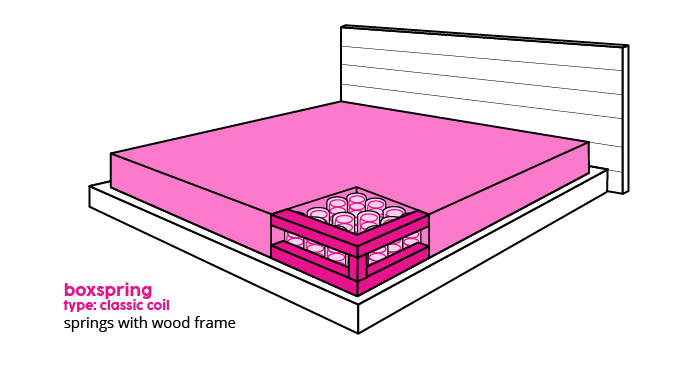
Although it may be necessary, per the manufacturer, there are also some negatives to having a traditional coil-based box spring.
Disadvantages of Box springs
#1. Extra Height: Adding a traditional box spring to a standard mattress may make your bed taller than you’d like. To get around this, there are also low-profile box springs.
#2: Extra Cost: When considering the cost of a new bed setup, including a box spring is an added cost. If you’re trying to keep the price lower, consider a base that allows you to skip box springs altogether. (more on that below!)
#3. Uneven Support: For a foam-based mattress, a coil box spring may not be the best choice. Foam relies on even, consistent pressure and pushback from a strong foundation below. Coils do provide good support, but there will always be gaps between those coils. Many times, a foam mattress would do better with a solid foundation like a platform bed, a wooden foundation, or a slat-based system.
Foundations
In addition to standard coil-based box springs or low-profile box springs, there are also complete wooden foundations. These foundations have no coils and still provide all the support a mattress needs.
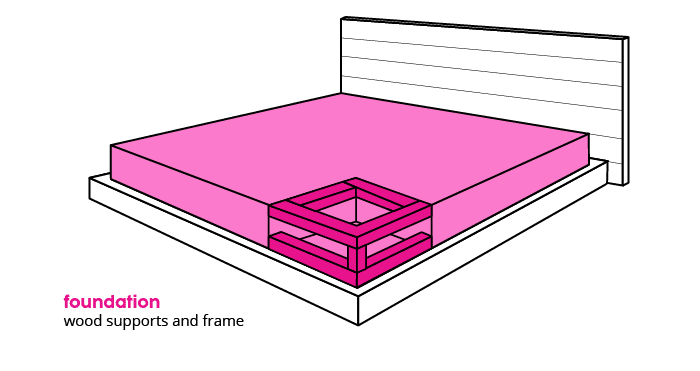
Box Spring vs. Foundation
Wooden foundations are oftentimes more supportive than coil-based box springs. Metal coils can flex and grow weaker over time, but a wooden frame is very rigid and strong.
Foundations often look identical to a box spring. However, in terms of the materials used to build them, they are very different.
Bed Frame Types
So what if you want to skip the box spring or foundation? Let’s say it’s not required by the manufacturer and you don’t want the extra height. If you find yourself in this scenario, the bed frame could be all that you need.
Here is a complete list below of some of the most popular bed frame types and whether or not they need a box spring.
| Frame Type | Need A Box Spring? |
|---|---|
| Platform – Solid | No |
| Platform – Slatted | No |
| Metal Frame – Collapsible | Yes |
| Metal Frame – Rigid | No |
| No Frame (mattress on the floor) | No |
#1. Solid Platform
A solid platform typically does not need a box spring. Solid surfaces provide consistent support of the mattress across the entire surface and are great for stabilizing the mattress.
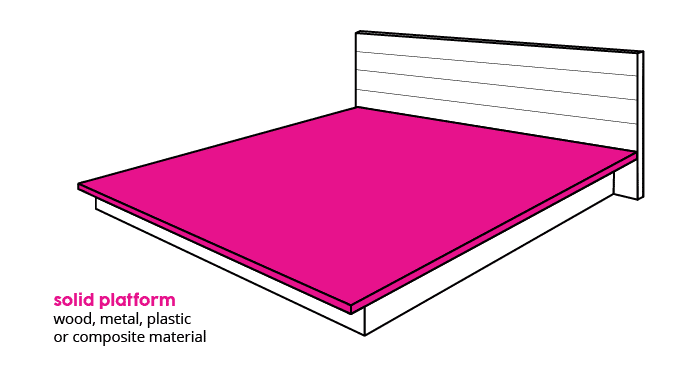
Many platform beds don’t actually have a solid bottom, despite how they look. A platform bed can be called “platform” and yet still use slats on the underside.
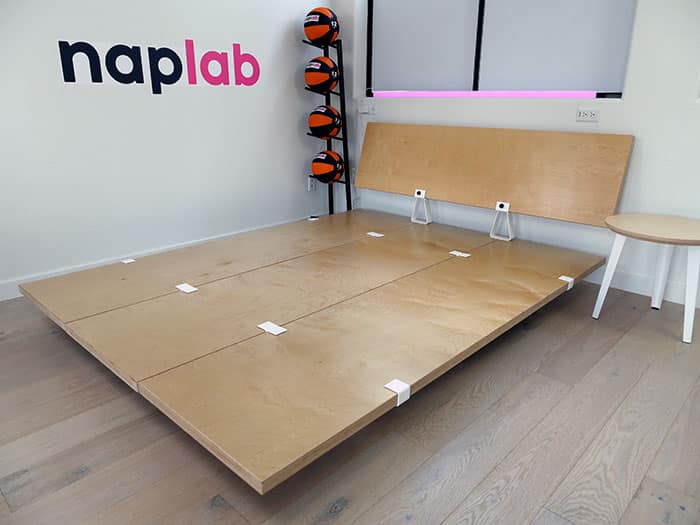
Always double check with the manufacturer if you’re unsure of the mattress support structures.
#2. Slatted Platform
Slats help to allow airflow and in humid environments, this can limit the potential for mold or other bacteria growth within your mattress. That said, if you are concerned about mold you should absolutely use a full encasement mattress protector.

On a slat-style platform bed, there’s usually not a problem with the width of the slats, but do check to see how close together they are. Compare this number with the mattress manufacturer’s recommendation to make sure you are in compliance.
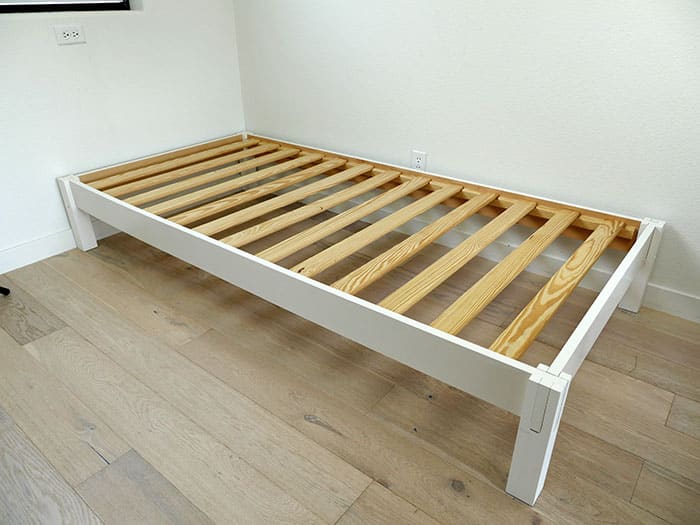
As a general rule you want to set slats that are:
- 5″ or closer together
- 2-3″ wide
- Rigid (not flexible)
#3. Collapsible Metal Frame
A metal bed frame comes in two general configurations—collapsible or rigid.
A collapsible metal frame generally will need a box spring. Most of these frames have just enough metal to hold the frame together, but not enough to support sleepers or even the weight of the mattress itself.
These are designed to work with a box spring or box foundation for support and rigidity.
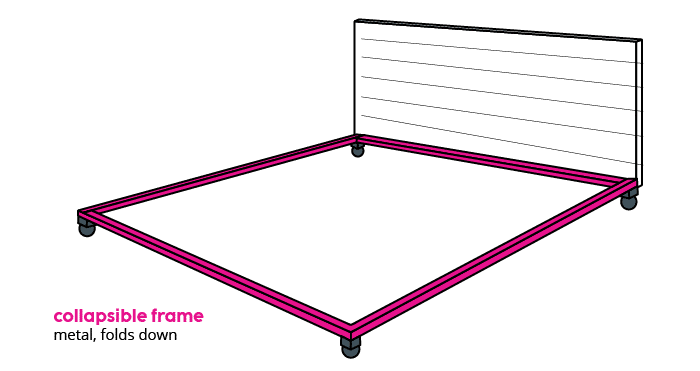
In addition to collapsing metal frames, there are also more rigid metal frames.
#4. Rigid Metal Frame
Rigid metal frames oftentimes do not need a box spring. These can still be foldable or compact in other ways, but they have substantially more metal than the fully collapsible frame shown above.
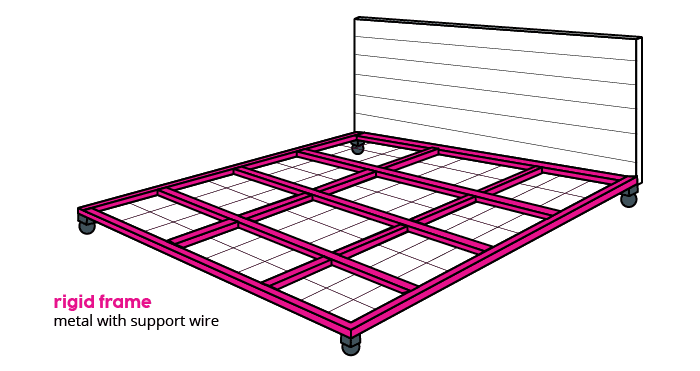
Can You Put A Mattress on the Floor?
The short answer is yes. On a solid floor, a mattress receives plenty of support so a box spring is not necessary. But is it ideal to put your mattress on the floor? In some cases no.
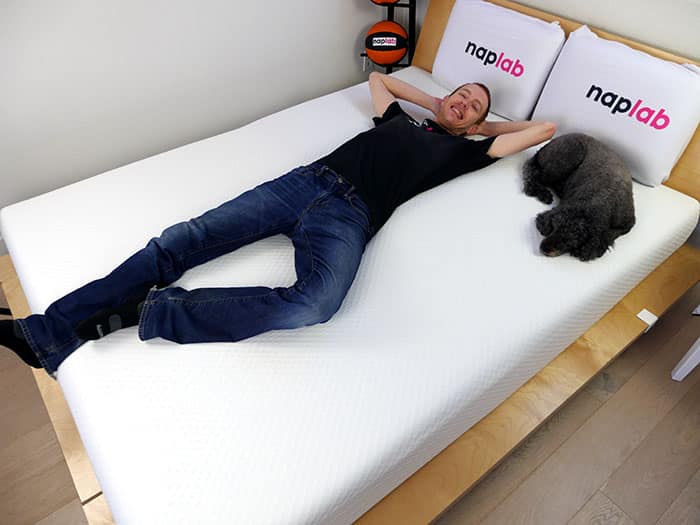
Two reasons why you might want not want to put a mattress directly on the floor: (1) hygiene and (2) humidity.
- Hygiene: A mattress on the floor is more susceptible to dirt, dust, bugs, bacteria, and other microscopic debris. For a cleaner mattress, give it some space up off the floor.
- Humidity: If you live in a very humid environment, you may find that a mattress on the floor increases the risk for moisture and possible mold growth. This would also be true for mattresses in RVs or converted camper vans so be aware if you live in these types of conditions.
Adding a full encasement mattress protector can help protect you and your mattress.
Box Spring Alternatives
So what about cases where you probably need a box spring, but you don’t want the classic coil-based box spring or even a boxy foundation. Do you have options? Yes, you do.
Some popular alternatives to traditional box springs include:
- Low profile box springs or foundations
- Bunkie boards
- Replacement slats
#1. Low Profile Box Springs
If you need a box spring, but want to avoid the extra height, consider a low-profile box spring. These can be as shallow as 4″ and provide the same amount of support as a traditional box spring, but with half the height.
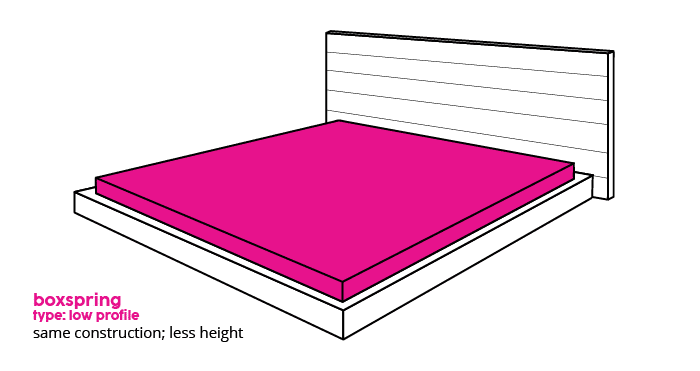
These modern low-profile box springs can use coils or are more often a rigid metal or wooden frame (examples shown below).
#2. Bunkie Board
Similar to a solid platform bed, a bunkie board can be used on a standard bed in lieu of slats or in cases where the slats just aren’t close enough together.
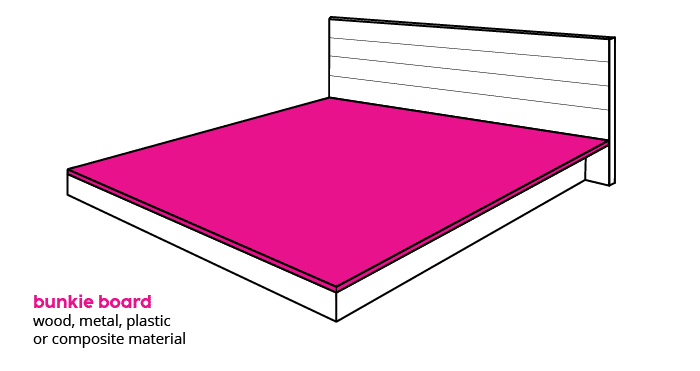
Bunkie boards are generally quite thin, usually just 1-2″ thick.
Bunkie board assemblies are often still slat-based and sometimes covered in fabric. They can be easily added to your existing bed frame without any cutting or screwing of slats.
#3. Replacement Slats
The last alternative to a box spring is also one of the simplest—replacement slat systems. Replacing the slats on your bed frame (or adding slats if there are none) is an easy and effective way to provide support for your mattress.
These slat systems come in two basic styles.
- Within a metal frame: the slats are fixed within a larger metal frame
- Roll-out slats: the slats are aligned on a velcro strip or other line and simply roll out and onto your bed frame
Summary
So the big question—do you need a box spring? The answer may vary.
You need a box spring when the manufacturer says you do or when the bed frame below does not provide adequate (or sometimes any) support.
If you need a box spring, you still have options. Modern mattresses may be better supported with a wooden foundation instead.
Other alternatives include:
- Low profile box springs or foundations
- Bunkie boards
- Replacement slat systems
The type of bed frame you have is also a big factor. If you have a solid or slatted platform bed, you can likely skip the box spring or foundation altogether.
Collapsible metal frames or bed frames where the slats are not close enough together will usually require a box spring.
Final Thoughts
When assembling your bed, support is a necessary part of the equation. That can mean box spring, foundation, or a bed frame with a supportive slab or slats built-in.
Support is important, but that doesn’t have to mean a bulky, outdated box spring. I hope this guide gives you the confidence to think outside the box spring.
FAQ
If you have a foundation under your mattress or a supportive boxspring alternative (ex. bunkie board, slats, metal supports, etc), a boxspring might not always be necessary.
Be sure to check with the manufacturer to see if they have guidelines as to whether or not a boxspring is required. Skipping a boxspring when the manufacturer requires one can void your warranty.
Actual metal springs on the inside of a boxspring is a bit of an outdated concept. Modern boxsprings alternatives tend to skip the springs which decreases shipping weight, lowers manufacturing cost, and makes the units easier to move and store as well…without sacrificing support.
In many cases, yes. Plywood provides a supportive base for a mattress, provided that the plywood has sufficient support underneath. A pre-cut product similar to this strategy is called a bunkie board.



